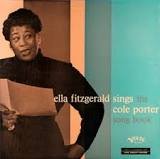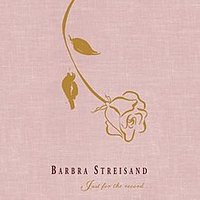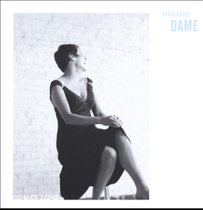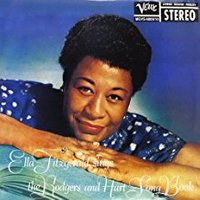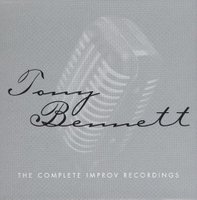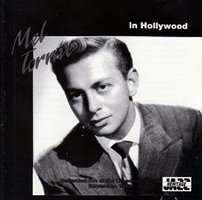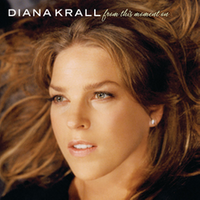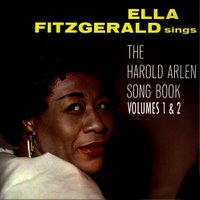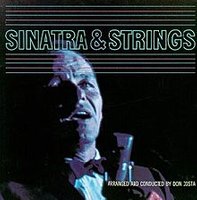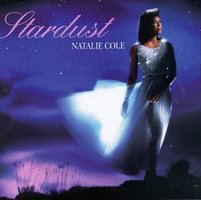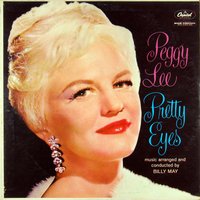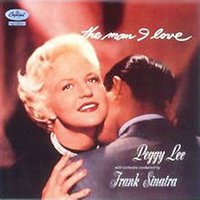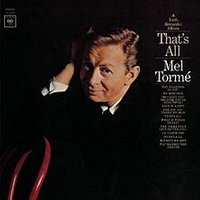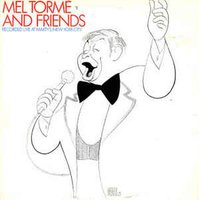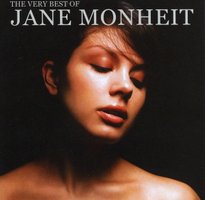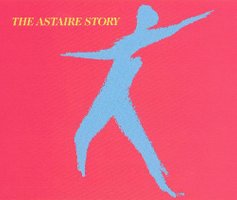Mark Patrick
Music Blogs
My thoughts on music, Musicians & Vocalists
The Verse
The verse of a song is, or maybe, was, traditionally, a few lyrics usually at the beginning of the song that establishes the scene for the chorus to come. It was a device mainly used in musicals, but did extend to individual songs.
(To listen to the songs, click on the album covers or where indicated in the text.)
I suppose it was mainly used in the 1920s-1940s, but some songwriters used the device into the 1950s. I can’t think of any songs later than that which include a verse, although I’m sure some do.
Cole Porter used it on various occasions. In his catalogue song, ‘You’re the Top’,
which comes from the 1934 musical, ‘Anything Goes’, the verse nicely sets the
scene. Recorded by many people, I first heard it on Ella Fitzgerald’s ‘Cole Porter
Songbook’ double vinyl album back in the early 1960s. The album was the first
one produced by Norman Granz for his Verve label in 1956, but the double album
I bought was a reissue.
I can’t say that it’s a great arrangement, but it is slightly humorous and fits well with the mood of the song. I suppose you might take this as a baseline, a standard.
There are more modern arrangements by other singers available. It was featured in the 1972 film ‘What’s Up, Doc’, which starred Barbra Streisand and Ryan O’Neal. Their version is available on the 1991 4 CD set from Columbia Records, featuring Barbra Streisand, ‘Just For the Record’. Again, as too often with her style, I think Barbra makes it unnecessarily over-dramatic and it’s
really a ‘fun’ song, not a power ballad. However, if you like her form of
interpretation, the whole 4CD set is well worth getting.
In 2005, Elaine Dame, a Chicago jazz singer, self-produced a CD called
‘Come’s Love’. It’s a series of ‘standards’, including one of Lennon and
McCartney’s, ‘Ticket to Ride’, which after some 50 years, I suppose counts as a
‘standard’. Accompanied on the album by Rob Amster on double bass, Art Davis
on trumpet, Tim Davis playing drums, Jeremy Kahn on piano and David
Onderdank on guitar, the sound is tight and the arrangements, by Rob Amster,
good. Well worth buying the CD or downloading the playlist.
Rodgers and Hart used a verse many times in their songs. Some of note, where the verse is important are: ‘Manhattan’, “Ten Cents a Dance’, ‘I Could Write a Book’, ‘Mountain Greenery’, ‘Little Girl Blue’ and ‘Bewitched, Bothered and Bewildered’ (where it is rarely sung).
For some good examples of the above songs, with verse, try:-
Manhattan - Diana Panton - Solstice / Equinox (2017)
Ten Cents a Dance - Ella Fitzgerald - The Rodgers & Hart Songbook (1956)
I Could Write a Book - Tony Bennett - The Complete Improv Recordings (2004)
Mountain Greenery - Mel Tormé - Live at the Crescendo (1954)
Little Girl Blue - Diana Krall - From this Moment On (2006)
Bewitched, Bothered and Bewildered - Ella Fitzgerald - The Rodgers & Hart Songbook (1956)
Most singers did, or do, drop the verse of the majority of songs, considering they are not really needed. However, some songs are much better when the verse is included by the singer. For other songs, the verse is indispensable.
On infrequent occasions, the verse actually turns out the be better than the song itself. A couple of examples of that, in my personal opinion, are the verses of ‘I’ve Got the World on a String’, music by Harold Arlen, with lyrics by Ted Koehler, which was written in 1932, and ‘Stardust’, music by Hoagy Carmichael, lyrics by Mitchel Parish. The music to Stardust was written in 1927, but the lyrics were added later in 1929.
Outstanding examples of these songs are Ella Fitzgerald’s version of ‘I’ve Got the World on a String’ from her 1961 Verve studio album, ‘The Harold Arlen Songbook’ (vol 1).
On this album she is accompanied by Billy May, who arranged the songs and
conducted the studio orchestra, which was made up of some great jazz
musicians including: Don Fagerquist - trumpet, Benny Carter - alto saxophone,
Plas Johnson - tenor saxophone, Joe Mondragon - double bass and Alvin
Stoller - drums, amongst others. The album, in fact, the complete Ella
Fitzgerald ‘songbook’ series, was produced by Norman Granz.
‘Stardust’ is a song I don’t particularly care for, but I do love the verse.
Apparently, Frank Sinatra felt the same way, as he recorded the verse (but nothing else) on his 1962 album, ‘Sinatra and Strings’, where the songs were
arranged by Don Costa, who also conducted the orchestra. There is a story that
a few months after the release of the album, Hoagy Carmichael cut Sinatra at a
Hollywood party, although he is said to have later apologised for his action.
If you want to hear a good version of the whole song, Natale Cole recorded it for
her 1996 studio album ‘Stardust’. This track was arranged by the jazz pianist,
Alan Broadbent. There are many other versions available, some include the verse,
others don’t, in fact ‘Stardust’ has the reputation of being the most recorded song
ever.
In the 1950s the use of a verse was going out of style. Bart Howard used one in
his 1954 song, ‘In Other Words’ and the verse is really integral to the song. ‘In Other Words’ became popular in the 1960s when it was set to a Bossa-Nova rhythm.
Peggy Lee, who recorded it, with verse, for her 1960 album ‘Pretty Eyes’,
where the songs were arranged, and orchestra conducted, by Billy May, later
suggested Bart change the song title officially to ‘Fly Me to the Moon’, which
he did. Peggy’s version is a beautiful, slow arrangement, which is sung with
emotion. Note how often she comes in behind the beat; very interesting. It’s a
lovely ballad version of the song.
Another nice interpretation of ‘In Other Words’, titled as ‘Fly Me to the Moon’
on the album sleeve, this time by a male singer, appears on the 1962 Capitol
label studio album, ‘Nat ‘King’ Cole Sings, George Shearing Plays’. An
agreeable arrangement, but of the two, I do prefer the Peggy Lee arrangement.
For a gentle Bossa-Nova version, try Diana Panton’s
from her 2011 album ‘If the Moon Turns Green’. Here she is accompanied by
Don Thompson on piano, Reg Schwager, guitar and Neil Swainson, bass.
There are, of course, many other versions available, both with and without the verse.
Checking over the discs in my collection, I encountered several more songs where the verse was important.
The verse of composer Jerome Kern and lyricist Oscar Hammerstein II’s ‘The Folks Who Live on the Hill’, although not essential to the song, certainly establishes the fictional
character of the singer.
Peggy Lee omitted the verse from the song on her 1957 album ‘The Man
I Love’, but it’s a beautiful version. She strikes just the right balance between
wistfulness and anticipation in her interpretation. The arrangements on the
album are by Nelson Riddle, and it was, surprisingly, as he couldn’t read
music, conducted by Frank Sinatra. Wonderful introduction by an unnamed
trumpet player.
If you want to hear a male singer interpreting the song, try Mel Tormé. He made two recordings of ‘The Folks Who Live on the Hill’, one on a 1965 studio album called ‘That’s All’ with full orchestra, arranged by Robert Mersey. The other appears on a 1981 live, double vinyl album ‘Mel Tormé and Friends (Recorded Live At Marty's, New York City)’. On this track he’s accompanied by Mike Renzie on piano, Donny Osborn on drums and Rufus Reid playing bass. It’s interesting that both these albums also contain ‘In Other Words’ / ‘Fly Me to the Moon’ with verse.
And if you want to listen to ‘The Folks Who Live on the Hill’, including verse, sung by a female singer, try Jane Monheit’s recording, again with full orchestra, from her album ‘The Very Best of Jane Monheit’, It’s a compilation album which includes ‘The Folks Who Live on the Hill’ as the only previously unreleased track.
There are many other songs I could have mentioned; for example Irvin Berlin’s ‘Isn’t This a Lovely Day’, which he wrote for the 1935 Fred Astaire/Ginger Rogers film
‘Top Hat’. It’s a song my father always referred to as ‘The Bandstand
Scene’. You can see the scene from the film on You Tube, (Click Here),
but for a better version by Astaire, try his 1952 recording with Oscar
Peterson and a small jazz combo. Great tenor saxophone solo by Flip
Phillips. It was recorded for a 4 album set called ‘The Astaire Story’,
which was released on Verve in 1953.
I think I’d better stop here, or I’ll write a book about songs with verses. I hope you enjoy my selections.
Unexpected Musical Delights
You never know what to expect when you enter a place; a pub, bar or restaurant, with live music being played.
Here in the south of Spain, where I live, it is likely to be flamenco, rock or pop more than jazz, although in the ‘piano bar’ of some hotels you might find a pianist playing a selection of more agreeable ‘muzak’, but it’s more for background rather than for people to actually listen to.
But whatever it is, it’s well worthwhile to take a few minutes to actually ‘listen’ to the music, musicians and singers – you might be surprised.
Many years ago, when I was in my early twenties I worked in London (UK). At that time, the late 1960s – early 1970s, I was not making a lot of money and, being single in a big city, found my entertainment in solitary pursuits like reading, or writing. Some evenings, however, after work and before returning to my shared apartment, I had a pint, or two, of ale to relax me.
So one Friday evening, I dropped into a pub near the place I was working for a pint and there was a short, round-faced young man in a corner of the bar starting to play; it was just him, singing in an American accent, accompanying himself on guitar.
I listened to his set, and something about the quality of his playing and singing caught my attention. His set was a mixture of popular folk stuff, with some original songs I found interesting. Over the course of the evening, I drank a couple more beers and listened. It was one of the most enjoyable evenings I’d to that point in my life, and I didn’t even know the young man’s name.
A year later I saw him again. This time he had a backing group and the venue wasn’t a local pub, but the Royal Albert Hall. He was singing with another young man called Art Garfunkel and he, of course, was Paul Simon.
Some years later, my wife and I were finishing an evening out in Puerto de Santa Maria in Cadiz and dropped into a small ‘piano bar’ at eleven o’clock.
There had been a teenage pop-rock group playing, who were packing up their equipment and loading it onto a rather battered van.
I asked the waiter if they were closing, or if we could have a drink.
“Come in, come in!” He welcomed us and we sat at a table near an elderly upright piano. The waiter brought us our drinks and stood watching the teenagers finish removing their stuff. As they, and their hangers-on, left, he sighed.
“That bad?” I asked.
He grinned. “Some of the people who play here have promise; others have to learn that volume is not sufficient to conceal a lack of practice, or talent.”
We were the only customers in the place, so he settled down at the piano and ran his fingers almost caressingly over the keys. I was surprised at how good the sound was until I noticed the name ‘Bechstein’ on it.
My second surprise came three seconds later when he started the introduction to Gershwin’s ‘Rhapsody in Blue’. When he finished the piece, some twenty minutes later, my wife and I applauded him with enthusiasm; we’d just listened to our own private recital.
Over a couple more drinks, I learnt he was the owner of the bar.
“I can’t make a living playing jazz piano here,” he told us. “People in Andalucia like flamenco and pop much more than jazz. So I started my little bar and it pays my expenses, and I sometimes get to help out young musicians and meet interesting people.”
“How many of the young musicians you helped have gone on to make a career in music?” asked my wife.
He shrugged. “Maybe two, out of a hundred or more. Not many people have the talent and stubborn determination to make it in music. It’s a difficult profession, as I illustrate only too well.
So, if you hear a man or woman playing or singing in a bar, pay them the courtesy of really listening. You never know; you might be hearing a talented, but rather blasé artist who, for some reason, didn’t quite make the big time; or an emerging talent who, within a few short years, will take the world by storm.
Mark Patrick
© Copyright August 2020
So You Want to Become a Singer?
One of the big differences between the vocalists of yesteryear and those of today is in their musical education.
In the past, most singers were ‘naturals’ and their musical education was, in most cases, very informal; maybe they came from a musical family, sung in a church choir, or listened over and over again to 78rpm records of their favourite recording artist. Very few actually studied music or voice formally, except perhaps, for private teachers who came to their house a few times a week and were paid for by parents.
These days, singers, in general, are much more musically educated; they can read music, play instruments, have learnt breath control so as not to damage their voice, and can explain exactly what they want, in musical terms, to their backing musicians.
I’m not saying that today’s vocalists are ‘better’ than those of the past, but that their education gives them advantages; whether they take them or not is another matter. For what that training might not do is give them a ‘feel’ for the lyrics of a song, or the ability to put a song over to an audience so they fully understand all the nuances involved.
Billie Holiday was a great singer, but her voice was average at best, and in her later years, not even that. However, she could get inside a song, particularly ballads, and transmit the emotions and pathos the songwriter intended to the listener.
Frank Sinatra apparently practised breath control by singing while swimming underwater; but he couldn’t read music. When he once decided he’d conduct the orchestra for Peggy Lee’s album ‘The Man I Love’, Nelson Riddle, the arranger protested. Later, Nelson recounted how Sinatra had taken the scores home from the studio one Friday night and returned the following Monday with them scrawled over with balloon notes; ‘violins here’, ‘trumpets intro’ etc. Nelson Riddle added; ‘And to my, and many people’s amazement, he did actually conduct the orchestra.’
The natural, or basic, singing ability of the young vocalists of the past was refined in another manner; in singing with the dance bands. Here, surrounded by professional musicians, they really learnt their craft; the discipline of singing on time and in tune, and how to phrase under the limits of strict dance tempo.
Billie Holiday and Peggy Lee sang with Benny Goodman’s orchestra, Ella Fitzgerald with Chick Webb’s, Sinatra with Tommy Dorsey’s and Doris Day with Les Brown and his Band of Renown etc. These, and the many other dance bands, gave the singers the practical training they needed to succeed.
The big bands are all pretty well gone now; too expensive to economically maintain, but the colleges and universities have attempted to take their place.
Unfortunately, sitting in a class on musical theory or voice training with a professional teacher is not the same as singing in front of a live audience night after night – the ‘feedback’ is very different.
Don’t misunderstand me, the colleges and universities do a great job and there are some very good younger (to use the term lightly) modern singers out there who have travelled this route.
A formal education is a help, especially if it is linked to raw talent and a burning enthusiasm to be a success. Then that talent and education has to be refined; singing to unappreciative audiences in hotel bars, clubs and pubs. Professionally singing, or playing, is not financially rewarding and few vocalists or musicians can actually live off their music, especially at first. So, at that same time as singing at night, there is the actual business of living; for the rent must be paid, and the electricity and phone bills, food has to be bought and money for travel etc. To survive, it’s working at a day job as a secretary, office-worker, barman, waiter, or just flipping burgers. And all the while singing or playing at night, and saving money to record demos for posting on YouTube, and maybe making enough for studio time to cut a CD for release on CD Baby, or Amazon etc.
The world has changed and, with that change, the form of getting music out to the listener has changed – it no longer needs a big record company behind a singer to become a success.
Some might not like it. I’m not sure I do, but I’m ancient, so my children tell me. I’m pretty sure the traditional record companies don’t like the new way of distributing music either – but it is, what it is.
In all this, one thing remains clear; to become a great singer of whatever genre; jazz, rock, pop, folk, country, reggae or even rap, takes a whole load of natural talent, a musical education, learnt skills in practical situations, a stubbornness that would make a mule jealous, and dedication to a goal you might never achieve.
And to actually make money at it takes a hell of a lot of luck, but then, it always did.
I wish all young vocalists and musicians, of whatever genre, all the best in their endeavours.
Mark Patrick
© Copyright June 2020

